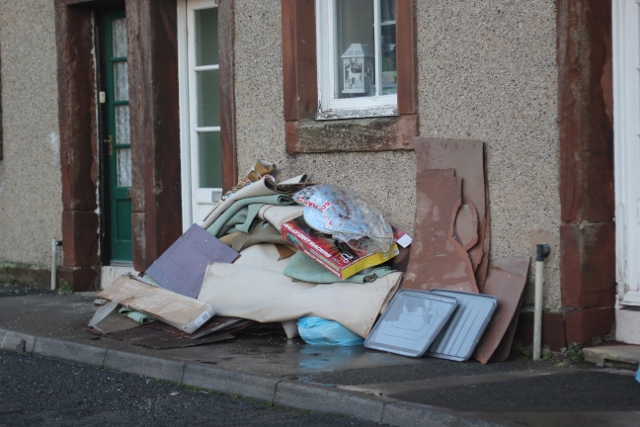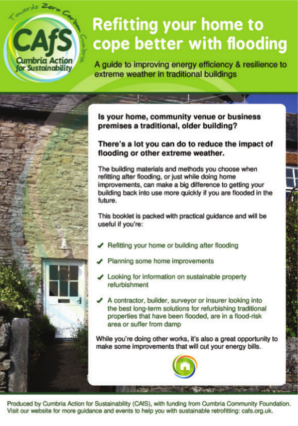If your property is at risk of flooding or other extreme weather, we've got some great resources to help you adapt it, so it'll cope better in future.
 In this section, you can download our eight-page guide to adapting your home for flood resilience.
In this section, you can download our eight-page guide to adapting your home for flood resilience.
Not sure what flood resilience measures you need? You might be eligible for a free home audit.
And, follow along as a house in Appleby is renovated to cope better with flooding in the future.
Browse below for details.
How to make pre-1920s homes more resilient to flooding
 Older buildings with solid or rubble-filled walls need a different approach to retrofitting. That’s because of the way they’re designed to manage moisture.
Older buildings with solid or rubble-filled walls need a different approach to retrofitting. That’s because of the way they’re designed to manage moisture.
If you use modern techniques like tanking or materials like cement, you’re more likely to trap moisture in the stonework, which can damage it over time and cause damp.
We’ve put together an eight-page guide to reduce the impact of flooding or other extreme weather on your traditionally-built home, community venue or business premises, while protecting its structure for the future.
There’s advice on the types of building materials and methods to use, so that you can get moved back in more quickly and with less stress and cost if you are flooded in the future.
If you’re doing quite major refitting, it’s the ideal time to improve your building’s energy efficiency, too. The guide includes a range of suggestions that are perfect for traditionally-built properties.

We’ve been able to produce this guide thanks to funding from Cumbria Community Foundation.
Follow the real-life renovation of a Cumbrian house that was flooded during the storms of 2015.
33a Chapel Street in Appleby is being fully renovated so it’s #ReadyForRain, and you can follow progress in our videos diaries and site visits.
Learn from the builder, who specialises in older properties, as he shares his advice and tips on making these buildings cosy and free from damp.
The idea is that the house will be able to dry out more quickly and with less damage if there’s flooding again in the future.
A lot of the principles apply to any traditionally-built property, whether it’s at risk of flooding or not.
Are you considering improvements to your home, to make it more energy efficient and better able to cope with extreme weather? Not sure what to do or where to start?
If your home is at risk of flooding or other extreme weather, CAfS can carry out a home audit, to work out what improvements to make.


